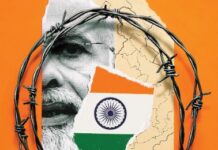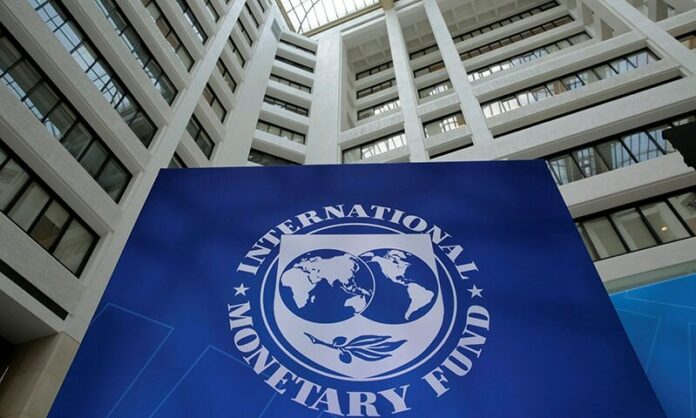Perhaps the biggest sign of the changing times, of its being a new situation for the country, is that the successful review by the IMF of its current Stand-By Arrangement with Pakistan, did not provoke an outburst of self-congratulation by the current government.
It was not really a matter of the government not taking credit for something that was ongoing when it took over less a month ago. After all, that SBA’s being granted was perhaps the last thing that the present PM achieved before he gave up office. Now that the caretaker period has been tided over, the time has come for a longer IMF programme, and it is once again Shehbaz Sharif who must do the needful. His Finance Minister has changed, which means he is the only constant factor in the equation.
Getting out of the clutches of the IMF is not just uncertain, it is also politically difficult. It is much easier to slip a little further into bondage with each programme
Perhaps it is the realization that this review not just brought the SBA to an end, but also laid the groundwork for a new agreement, that has prevented the usual setting off of fireworks. The Finance Minister and Prime Minister then spoke of the necessity of a new IMF programme, as well as the need for potentially painful reforms.
There seems a realization that now the IMF would double down on its previous demands, and finally force through the reforms it has been asking for, but which have been resisted. In the review process, the Finance Minister agreed not to include any amnesty scheme in the Budget, as well as end various sales tax and income tax exemptions.
It has become almost a given that any further lending must come only after IMF approval. Even China, Saudi Arabia and The United Arab Emirates do not lend in the face of IMF disapproval. They all wish to save Pakistan from fiscal collapse, or even default, but also wish to prevent themselves suffering irreparable loss. In short, they have no wish to throw good money after bad, by paying for Islamabad’s extravagance.
Part of the problem seems to have been US generosity during the Cold War. Money received for development was apparently meant to be embezzled, as a sort of bribe to members of the power elite. When Zulfikar Ali Bhutto showed that Pakistan was not a blind follower, the multilateral institutions, including the IMF, started to get business-like.
By then, the power elite was not just embezzling government funds, but exploiting its position to protect its interests. This led in turn to the help that was extended to Pakistan by its friends that they would pay for Pakistan’s extravagances.
The problem is that the government of Pakistan runs a chronic deficit. In short, it spends more than it raises in taxes. To make up the deficit, it has to borrow. Time was, its revenues would cover current expenditures, but not development. For that, money had to be borrowed. It was, from abroad.
A lot of that money ended up in the coffers of the elite. However, that money had to be repaid, and that too with interest, and in foreign exchange. That became a charge on the budget. Because it had to be paid in foreign exchange, the IMF got involved, so its loans are used to repay old loans.
The theory behind those loans is that they were used for projects that would lead to earning, and in foreign exchange, which would be used for the loan repayments. At least that was the overt theory. (It was the same theory as was behind the Raj construction of canals; the same colonialist mindset was at work.) Actually, that money was meant to be embezzled. Then that money had to be repaid out of tax revenues.
There was a time when debt could be serviced out of taxes, but no longer. Now the tax revenue is not going to be enough to service debt, and pay salaries. The IMF is thus pressing for Pakistan to maintain a primary surplus, which consist of expenditure less interest payments, less revenue. Clearly, this primary surplus will be applied to debt servicing.
Pakistan thus converts the old development loans by borrowing commercially from the money markets. When it can’t really mange to service those, it borrows from the IMF, thus actually converting those loans intoIMF loans.
That is what gives the IMF the power to delve into Pakistan’s financial arrangements. That delving first resulted in a campaign to reduce military spending, then to end circular debt, and now to revisit the National Finance Commission Award. In this way, the IMF is visibly changing the goalposts, and we are seeing the conditionalities of the future arising.
One danger that has been pointed out is that Pakistan could end up in a debt trap as Argentina has. Former Adviser to the Finance Ministry, Dr Ashfaque Hasan Khan, has noted that the $8 billion programme over the next four to five years shows Pakistan as on the same path as Argentina, which has been on IMF programme for over half a century now, and whose latest programme is of $44 billion. The latest review was in January, and unlocked $3.3 billion. Of which $2.8 billion were due in payments to the IMF, so that in effect, Argentina will get $500 million to make other payments, and continue the sort of extravagance that got it into trouble in the first place. Pakistan at the moment is not the IMF’s biggest debtor. It is fourth, behind Argentina, Egypt and Ukraine. Argentina is clearly in a vicious debt trap, as the creditor retains most of what is lent to pay off previous loans. Pakistan isn’t there yet, but that is where it seems headed.
It might well seem that there is no way out of the debt trap. However, there are ways, none of which the government can follow. The first is to earn a lot of foreign exchange. Even if the government itself doesn’t, if it dramatically increases its revenue, it can use the rupees to buy the forex from the State Bank. Another method is to welsh, and to opt for a default.
Can the government increase revenue substantially? One of the problems with borrowing from the IMF is that it doesn’t really contribute to development, neither to increasing imports nor revenues. It might mean that borrowing from development finance institutions can continue, but that borrowing has not led to earnings.
Can the government default? Sri Lanka did, and the government is doing its best not to. The Sri Lankan example is not encouraging, for it has had to go back,cap in hand, to the IMF. It also means that the country might have to face a shortage of imports. In Pakistan’s case, there would be a lot of suffering.
Pakistan imports fuel for transport and power, medicines and food (at least palm oil for dalda ghee). The shortages of these items would cause prices to rise, and with inflation still not under control, this could cause hyperinflation. These are costs that no elected government would tolerate.
Perhaps only a government which relied on the Islamic prohibition of interest would be able to default. However, present Islamic parties, which want electoral support, would be unable to take such a decision, which would mean cutting the country off from the international banking system, on which all international trade is based.
Getting out of the clutches of the IMF is not just uncertain, it is also politically difficult. It is much easier to slip a little further into bondage with each programme.























